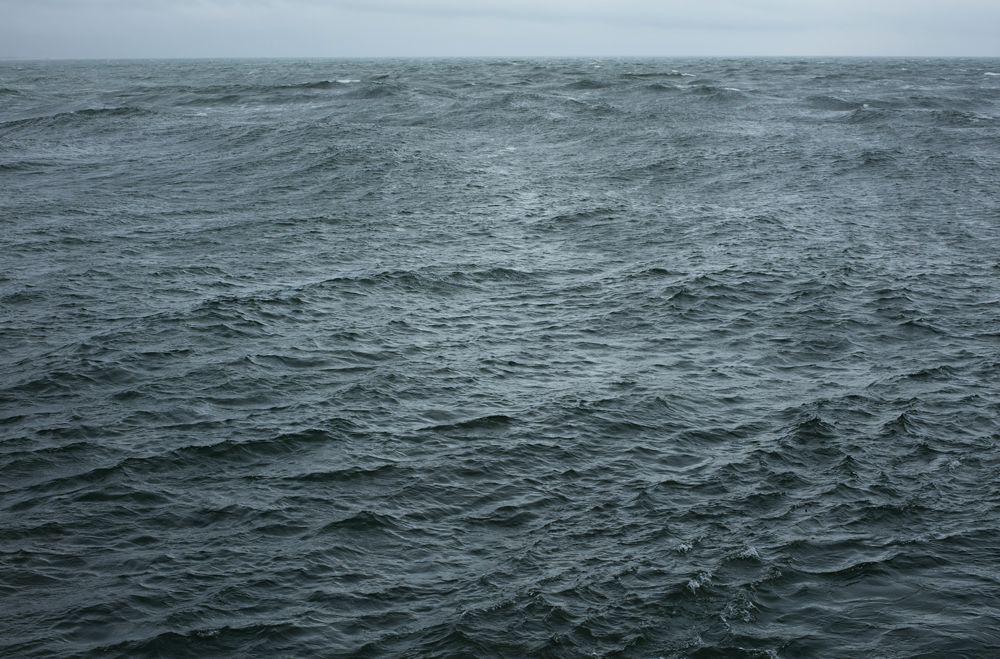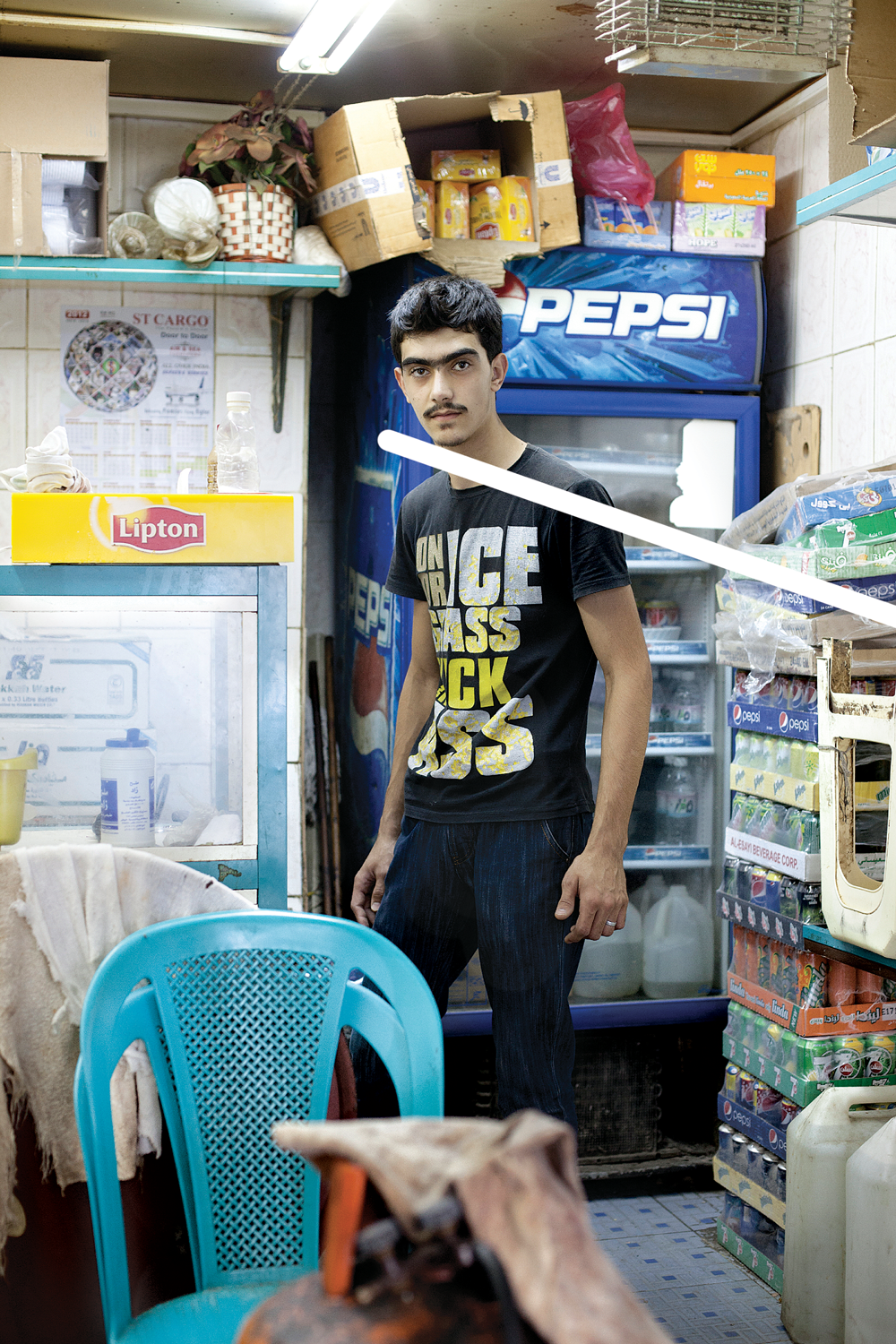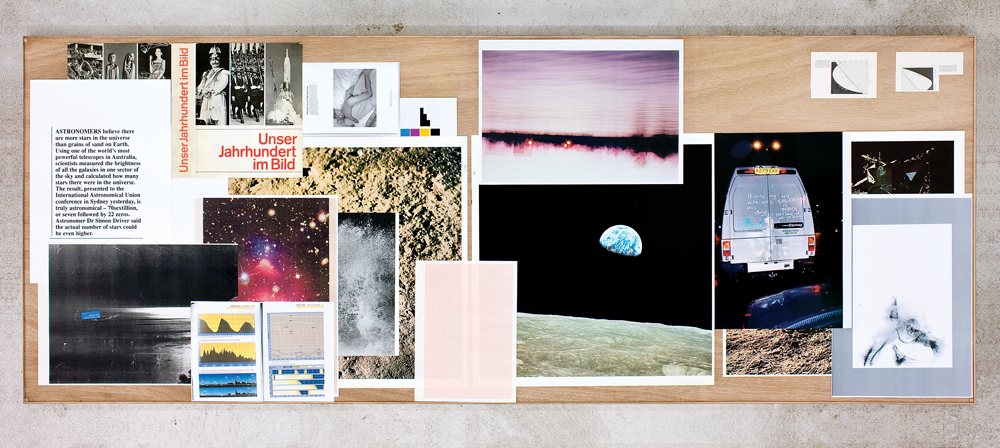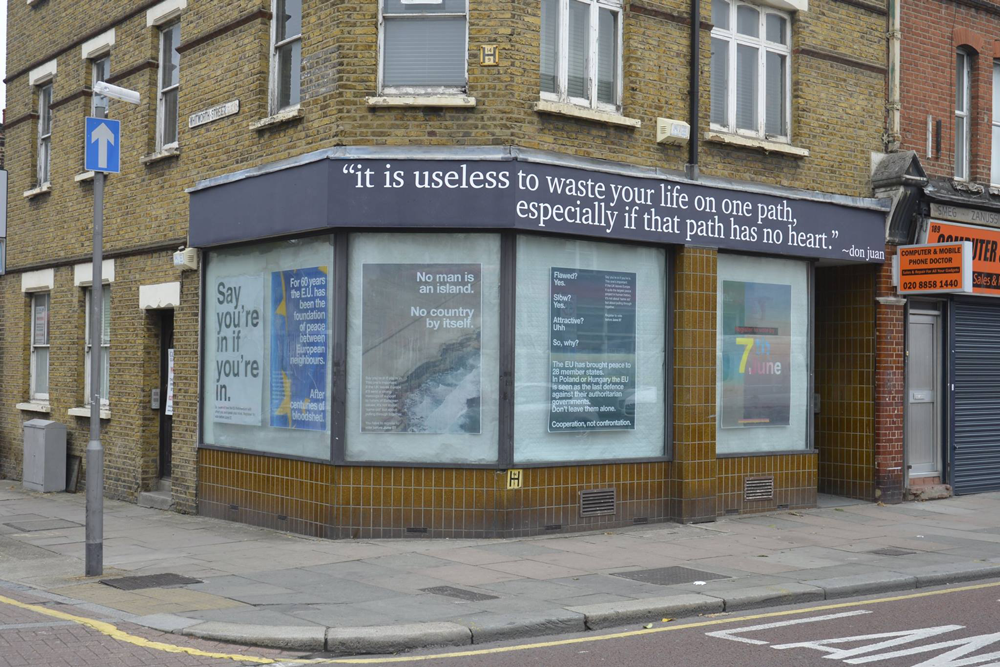Perhaps no other photographer of the last quarter century has helped us better to see what our world looks like than Wolfgang Tillmans. Born in a small city not far from Düsseldorf in 1968, educated at Bournemouth and Poole College of Art in the United Kingdom, he came to prominence in the early 1990s with images of a new generation of pan-European youth—of rave culture, the electronic-music scene and queer activism, among many other subjects. Originally found on the pages of magazines, most famously i-D, he was soon exhibiting in galleries and museums worldwide and publishing some of the most influential artist’s books of our time, from the eponymously titled 1995 Taschen volume featuring his iconic Suzanne & Lutz, white dress, army skirt (1993) on the cover through last year’s What’s wrong with redistribution?, which I wrote an essay for, published on the occasion of his receipt of the Hasselblad Award, the most prestigious prize in the photography world.
Since the 1990s, Tillmans has not only pictured the world around him in all its visual diversity but has also turned to various means of camera-less photography, producing lush abstractions that probe the very nature of his chosen artistic discipline. He is no less innovative in his exhibition designs, where he uses the wall as a positive space in and of itself, upon which prints of radically differing sizes might be mounted, framed or unframed, in suggestive juxtaposition. Such installations invite us to step back to comprehend the wall as a whole and then move forward to look closely at the individual image in an embodied act of looking. Throughout his practice, we sense the artist’s unflagging generosity toward his viewers and toward the subjects of his work.
Early this summer, Tillmans and I found a few moments one afternoon to connect over Skype and talk about his work. He was briefly pausing in his Berlin studio, planning the next stages of his passionate contribution to the anti-Brexit campaign in advance of June’s EU referendum—as a German who has long resided in London, he has been deeply concerned by rising nationalist tendencies throughout Britain and the Continent. In an unusually direct activist stance, he and his assistants were designing and distributing posters and T-shirts to speak directly to voters, the young especially, about the values of European citizenship. We turned from these immediate concerns to three images, chosen from among the many hundreds produced in the last few years, that might speak to his broader interests. Through them, we are offered a glimpse into the world as Tillmans sees it.—Tom McDonough
 Wolfgang Tillmans, The State We’re In, A, 2015. Ink-jet print. Dimensions variable. Courtesy Galerie Buchholz, Berlin/Cologne.
Wolfgang Tillmans, The State We’re In, A, 2015. Ink-jet print. Dimensions variable. Courtesy Galerie Buchholz, Berlin/Cologne.
The State We’re In, A, 2015
Wolfgang Tillmans: The State We’re In, A, is part of Neue Welt, the loose family of pictures I began at the end of the last decade. These had two points of departure: “What does the outside world look like to me 20 years after I began photographing?” and “What does it look like in particular with a new photographic medium?”
In 2009 I started using a high-resolution, full-format 35-mm digital camera and had to deal with this incredible change in focus and detail. This is not a purely technical issue but actually raises some philosophical questions because, as we know, a lot of advances in art have had their origin in advances in technology. I suddenly found myself faced with photographs that show more detail than my brain can ever remember, and more detail than my eye could have seen.
In the case of The State We’re In, A, there is such an infinite amount of detail on the water’s surface—a sea that is very agitated but not yet breaking into waves. We’re seeing the full might of the big wave movements, but then there are also lots of smaller and smaller waves, and they’re all battling with each other, clashing with each other, and you can sense that the surface is about to erupt at any spot, at any place and any time.
Initially, the photograph was a response to seeing this with my own eyes at the end of a very long pier in Porto, Portugal, in the Atlantic. But then later, back at the studio, I felt that this is actually a little bit like an analogy with the state that we’re in right now.
Tom McDonough: A heaving North Atlantic under a heavy sky, the horizon line pushed toward the very top of the image so that the rolling surface of the ocean takes up almost the entirety of the print. We look down on the waves, almost engulfed in the swells.
The history of art has taught us to see in such seascapes an expression of nature’s overwhelming power, its ability to devastate human hopefulness—think of Géricault’s Raft of the Medusa—or to mirror humanity’s own capacity for cruelty, as in Turner’s The Slave Ship.
Yet the sea is void of any presence here; in fact, there is something resolutely inhuman about this photograph.
This has to do, first of all, with the subject itself, its sheer sublimity, but it is also an effect of Tillmans’s means: his use of high-resolution digital equipment that captures an unprecedented degree of detail, much more than the eye alone could apprehend. We lose ourselves in this wall of water, which offers us simultaneously nothing to see and an extraordinary wealth of visual specificities.
In this it echoes other all-over compositions found in Tillmans’s work, his fields of stars or his television screens filled with static. But here his title invites other sorts of projections, asking that we read the image as an emblem of our current state of affairs: “at sea,” “adrift.” It’s a darker message than we’ve come to expect from an artist more typically associated with a humanist optimism, but a resonant one for these uncertain times.
 Wolfgang Tillmans, young man, Jeddah, b, 2012. Ink-jet print. Dimensions variable. Courtesy Galerie Buchholz, Berlin/Cologne.
Wolfgang Tillmans, young man, Jeddah, b, 2012. Ink-jet print. Dimensions variable. Courtesy Galerie Buchholz, Berlin/Cologne.
young man, Jeddah, b, 2012
Wolfgang Tillmans: young man, Jeddah, b was taken in one of the more exotic locations that I visited for Neue Welt, for which I travelled to 37 countries. These were often short visits, but in the very first days of being in a new place I have a certain lucidity and response that reacts to purely superficial and visual cues, recognizing differences and similarities.
So this was taken in the old town of Jeddah, a place that you can’t visit unless you’re on official business—Saudi Arabia distinctly does not want tourism. I was lucky that somebody helped me to get a visa in a different way.
It’s striking—before I went I was almost fearful because Saudi Arabia stands for so many things that are opposite to what I believe in: obviously their attitude toward gay people, and their export of political Islam. And yet what I recognized again and again, in each country I went to, is of course there is so much that connects us rather than divides us. This guy also wants to wear a cool T-shirt and he has a trendy haircut. There are other symbols of this globalized world we’re in: the brands, like Lipton Iced Tea, the absolutely omnipresent extruded plastic chairs.
It was an unspoken, very brief portrait sitting. He agreed to let me take his picture and just stood therein a very unusually intense way, not doing what people often do when asked to be photographed—smiling or making a “V” sign. I really liked how he just stood there and rested in himself; that’s what I like about portraits in general, when people are—not disinterested—but definitely unaffected in terms of posing.
Tom McDonough: This is perhaps closer to what most people would think of as a “typical” Tillmans photograph: a scene of everyday life caught on the fly, not a decisive or pregnant moment, but what I’d like to call a “whatever” moment. The scene is uncomposed to the point of casualness, with the young man in question stopped momentarily, weight resting on one leg, upper body leaning ever so slightly forward, as if in the next moment he would be moving on.
But for this instant, he pauses to turn to us, his gaze intense under those synophrysic eyebrows. He stands amid the clutter of a storeroom, surrounded by stacked cases of pop, cheap plastic chairs, a refrigerated display case filled with cans and bottles, boxes heaped here and there.
This could be anywhere, if Tillmans did not provide a location in his title—Jeddah, along Saudi Arabia’s Red Sea Coast. Only then do we begin to notice certain telling details: the lack of alcoholic beverages, the wedding ring worn by the young man and the yellow highlighting on a calendar hanging on the back wall that indicates the dates of Ramadan in the year Tillmans took the photo.
If he had originally made his name with snapshots taken among his circle of friends, in the Neue Welt series—of which young man is a part—Tillmans turned outward to find his subjects in the world at large.
 Wolfgang Tillmans, truth study centre 8, 2005. Wood, glass and various materials. 68 cm x 1.98 m. Courtesy Galerie Buchholz, Berlin/Cologne.
Wolfgang Tillmans, truth study centre 8, 2005. Wood, glass and various materials. 68 cm x 1.98 m. Courtesy Galerie Buchholz, Berlin/Cologne.
truth study centre 8, 2005
Wolfgang Tillmans: In the early 2000s I found myself interested in working with the photographic medium itself, with pictures I made in the darkroom that did not represent the outside world.
But on a personal level I was very much affected by the change of political climate we faced after the Bush election and 9/11—a general drift backward to dogmatic ideas, ideologies and, in particular, claims of truth. I collected newspaper articles about that, thinking that some of them could express what I felt better than my photographs.
In 2005 I made an exhibition in London at Maureen Paley: one floor had purely abstract photographs, and the other showed a collection of this material under the title truth study centre, which isn’t a claim itself, but almost a reminder of its impossibility. These man-made hot spots and battlegrounds about truth, like the existence of weapons of mass destruction in Iraq, were embedded in the larger context of astronomy, which had also been the first love of my life, and is for me a great levelling tool. It puts everything in context and also at the same time stresses the importance of observing, of empirical study and of visibility.
Astronomy always reminds us that we don’t know everything, and that what we know is actually only granted to us by what is visible. What this particular table deals with is contingent moments, like the spray of water frozen in time, small diagrams showing the visibility of Mercury, or a triple-exposed picture of a sunset. But then also a photograph of a naked man sleeping, his bum exposed. There are always elements of the absurd or fun, breaking any kind of claims that this is a serious study, but, how should we say, that it’s a complete, logical argument. It is a sensual experience as well.
Tom McDonough: Ten years ago, Tillmans introduced a new form of exhibition architecture: simple tables that serve as a support for photographs, texts and even, on occasion, the detritus of everyday life. Truth study centre asks us to reflect upon the great political, social and economic rifts that have shaped our time, but they do so not in a didactic fashion—these tables do not proffer some singular “truth” to their viewers—but rather by demanding that we look skeptically upon any claim to certainty.
And Tillmans’s rejection of absolute truths entails, as its complement, an attention to what is not yet visible, to developments in our society that are just crossing the threshold of perceptibility: When do developments become noticeable? When is a process recognizable? Which one achieves critical mass? When does something become something? When do things become visible? What can pictures make visible? These profoundly photographic inquiries are at the heart of these tabletop works. They are, like all his art, a remarkable contribution not only to our culture but also to our understanding of the wider world around us.
Wolfgang Tillmans and Tom McDonough will be in Vancouver on October 26 and Toronto on November 11 for speaking engagements as part of the Canadian Art Encounters series. This article is adapted from the Fall 2016 issue of Canadian Art.

 While Wolfgang Tillmans is primarily known for his prolific and influential career in photography, he also took an activist stance this year, designing and distributing T-shirts and posters expressing concern about Britain leaving the EU. Here, some of the posters, which were free to download online, are installed in a storefront. Photo: Sean Raggett via Between Bridges Facebook page.
While Wolfgang Tillmans is primarily known for his prolific and influential career in photography, he also took an activist stance this year, designing and distributing T-shirts and posters expressing concern about Britain leaving the EU. Here, some of the posters, which were free to download online, are installed in a storefront. Photo: Sean Raggett via Between Bridges Facebook page.







